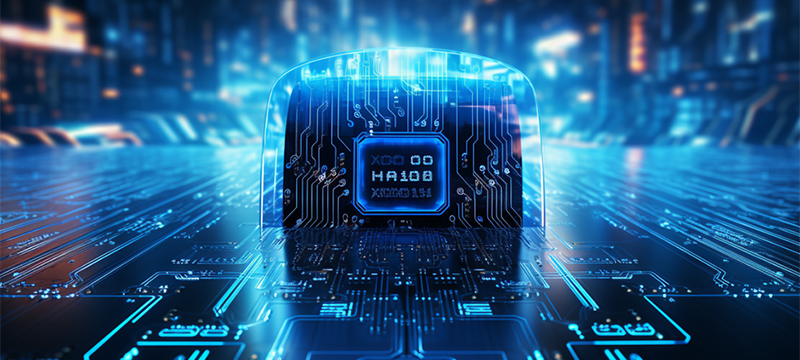2023 was an eventful year in the tech sector, where AI went mainstream with the explosion of language learning models.
As we progress into 2024, the integration and evolution of artificial intelligence in various domains are not just changing; they are set to revolutionise the way we approach design, development, and deployment in these sectors.
With advancements in artificial intelligence accelerating at an unprecedented pace, we stand at the cusp of a new era where AI’s influence extends beyond mere automation to become a cornerstone of innovation and efficiency.
The engineering team at ByteSnap Design has been reflecting on the future of AI in the technology and electronics design industries.
Here is the team’s forecast for the pivotal AI trends likely to emerge during 2024 to redefine industry standards and drive forward a new age of technological excellence.
AI to trigger a battle of the Smart Assistants?
AI assistant tools will continue to be integrated into existing tools to make tasks easier. An example of this happening this year is Zoom’s AI companion which can summarise meetings into notes.
Expect to see development tools such as an IDE integration which can generate GIT commit notes, and release notes automatically during 2024.
We also predict companies will be trying to increase their profits with more monetisation from smart assistants such as Alexa and this will drive techy people towards open source alternatives, such as Home Assistant which run locally.
Rise of the Robotaxi
We anticipate that the first un-geofenced electric Robotaxis will become operational and start accepting paying customers over the coming months.
This is likely to scale steadily over the next few years to replace Uber as the transport medium of choice, providing legal issues can be overcome.
Ultimately, this will make car ownership a questionable decision because travelling this way could be cheaper than running a car.
Apple to enter the Generative AI race
We look forward to Apple unveiling a product to join the AI arms race with their own large language model. Other companies are embracing AI faster and already implementing it; for example, Bard into Google Assistant, and Microsoft’s push for AI in their Office 365 products. Nevertheless, Apple have a stronger than most in-house development philosophy, and it’s hard to see them allowing these products to go unchallenged.
Expect announcements in late 2024 from Apple around its generative AI offering.
Further AI disruption for the Smart Home market
Expect to see more innovation in the smart home market as consumers continue to look for ways to reduce their energy bills, with smart thermostats and TRVs becoming ever more popular. Nest are apparently trying to use AI to help understand consumers behaviour around energy consumption and we anticipate that this trend will continue.
With Apple releasing their Pro Vision headset in 2024, we also expect to see some manufacturers trying to compete with a cheaper product. Apple are excellent at design and are sometimes seen as a trend setter, but in this case are quite late to the party With Meta already well-established leaders. However, Apple have a history of knocking out incumbent leaders so this could be an interesting space to watch.
How much of a consumer appetite there is for this type of technology, however, remains open to question.
AI-enabled Integrated Circuits
We’re likely to see the greater emergence of AI on integrated circuits from companies such as Altered Carbon.
Computer chip manufacturers, Intel, for example, are incorporating AI cores into their CPUs.
AI algorithms in our view are mostly used for detection/categorisation. The classic example is using AI to detect whether an image contains a cat or a dog. However, even the way that the likes of Tesla use AI is similar – detecting images of signs for speed limits, or an image of the lines of the road – but the output is different in that it translates it into braking, accelerating or turning.
One of the projects we’ve worked on at ByteSnap sent accelerometer data into the cloud to detect people falling over. We see a scenario where a fall detector algorithm could be generated by AI and embedded within the sensor device, so that the huge amount of data does not need to be sent, allowing the product to consume less power.
Greater AI in Supply Chain Management
AI-powered forecasting is providing businesses with intelligence to prevent mishaps in the future, overcoming demand-supply mismatches to prevent overstock or understock of inventory.
This minimises costs and improves customer experience. We expect to see more of this across 2024. Additionally, AI-based algorithms are automating goods retrieval from warehouses for smooth order fulfilment, and AI-powered autonomous vehicles are reducing driver costs for delivery.
AI in software and electronics design
Software development and electronics design are both areas that AI vendors are targeting, as developers are expensive and timescales can be long. We can see initially the AI could be best at optimising PCB layouts in the hardware side and writing generic functions within software, albeit with dubious copyright infringement.
The work of translating very abstract requirements into real electronics still seems a very long way off though. This is partly due to lack of freely available models to train against in what is a fast-moving industry and little way for the circuits that are available to be assessed.
In addition, electronic engineering is actually quite a person-centred job; dealing with suppliers, customers, manufacturers, colleagues. Software AI trainers have raided github and ChatGPT was able to train linguistic models against the huge wealth of the World Wide Web.
However, for electronics, it will take another generation of AI development before engineering jobs are threatened.
The post ByteSnap Electronic Industry Predictions for 2024 appeared first on IoT Business News.






























